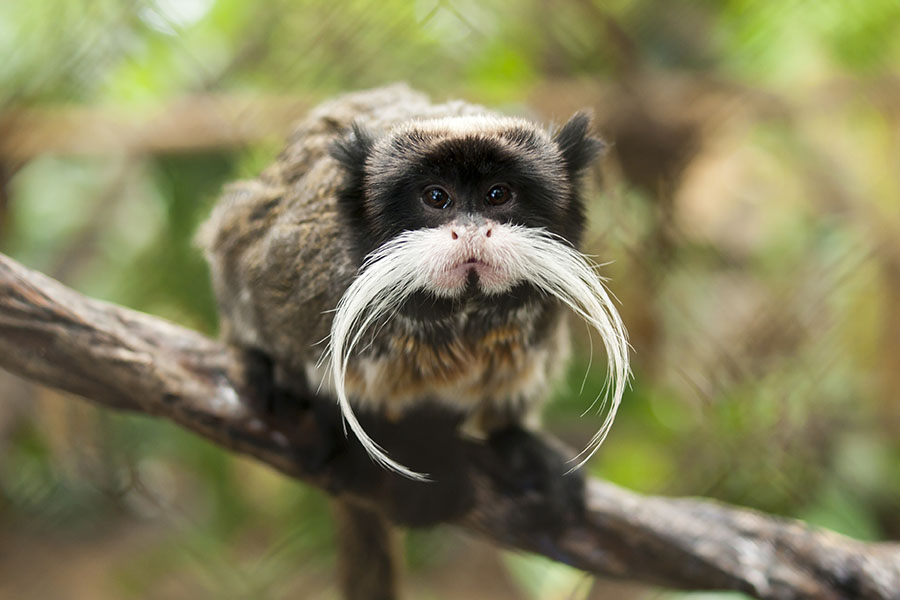Mammal of the Month
December 9, 2019
Now this is a good mammal. In keeping with the theme of featuring underrated, underappreciated animals, I present to you the emperor tamarin. I know what you’re thinking: I have no idea what an emperor tamarin is (is that how you pronounce that?), but wow that mustache looks nice. Well, assuming this page has been printed in color. So anyway, another month, another mammal. Let’s get started.
The mammal in question belongs to the Tamarin family Callitrichidae, a type of New World Monkey. The Tamarin family is a diverse one, having several different species contained inside it. While all of them are small, squirrel-sized monkeys, they vary considerably in appearance. In general, however, tamarins weigh between 8 and 32 ounces, have a 5-11 inch body length and 10-17 inch tail. Their fur is usually white, brown, black, or a mix. Tamarins are very closely related to marmosets because they are both New World Monkeys, but can be distinguished from each other primarily by the structure and arrangement of their teeth. Additionally, the extravagant facial hair that caught your eye before reading this is fairly common among Tamarin species, though none as pronounced as with the emperor tamarin.
According to Macalester College, the emperor tamarin was given its name due to how its flowing facial hair resembled that of German Emperor Wilhem II. It was given by a Swiss zoologist named Emil Goeldi as a joke, and just stuck.
Emperor tamarins are native to South America, mostly Brazil and Peru. They seem to like hanging out in the Amazon Rainforest especially. They like a wet climate, and are capable of swinging around, running, and jumping through treetops as a mode of transportation. They are omnivores, eating mostly fruits, flowers, and saps from their trees, as well as frogs and other small animals they can find. They live in groups of up to 40 individuals, but it is not uncommon to find smallers ones of three to nine in a group. These groups, called troops, are often organized with the most senior Tamarin at the top, calling the shots. They are very social mammals, exhibiting playful behavior in the wild and even with humans when raised in captivity.
The emperor tamarin’s adaptation is actually quite interesting, especially in terms of its vision. Macalester reports that roughly two-thirds of all females are trichromats, meaning they can see three colors. This allows them to accurately judge how ripe fruit is when they are deciding whether or not to pick it.
The other one-third of females and all male emperor tamarins are dichromats, meaning they can only see two colors. While it seems like seeing less color may be a disadvantage, it actually allows them to better detect predators and prey in the wild that are using camouflage. Their ability to see just two colors increases the visual contrast between the environment and animals who may be using the environment to hide.
As a species, emperor tamarins have two distinct paths of vision evolution, each path giving a distinct advantage. Since they live in troops, both types can benefit from the others’ abilities.















